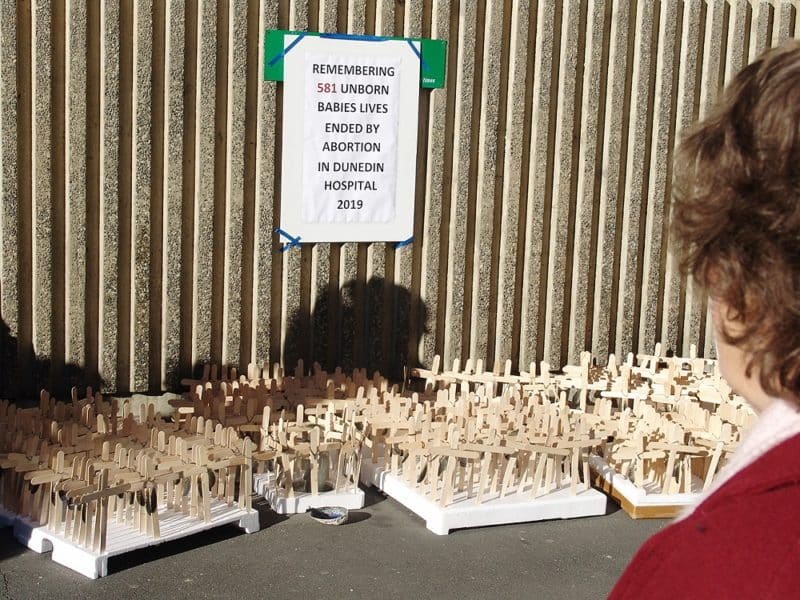by Bernard Moran
Here is the untold story of how an elite group of New Zealand abortion-rights advocates collaborated with their Australian counterparts to promote abortion on demand here, modelled on the successful campaign in Victoria in 2008.
The result was the Abortion Legislation Act, passed by 68 to 51 votes, and signed into law on March 23, 2020, just as the Covid-19 crisis diverted public attention.
Abortions are now freely available up to 20 weeks, and from then on up to birth, provided two health practitioners agree that abortion is “clinically appropriate”.
Here is how abortion on demand in New Zealand came about. In the 1990s, a coalition of pro-abortion feminists, activists, politicians, and health professionals in the Australian state of Victoria planned radical abortion law reform.
They developed a strategic plan, which ultimately proved successful and caught the attention of our own pioneer of abortion law reform, Dame Dr Margaret Sparrow, honoured for her “services to women’s health”.
She developed strong links with the Victorians and encouraged contact with their counterparts in New Zealand.
In December, 2008, the Victorian State Parliament passed the Abortion Law Reform Act. The Catholic Church in Victoria and the local pro-life movement disagreed on tactics, which inevitably weakened their opposition.
Meanwhile in New Zealand, John Key’s National Government was in power from November, 2008, to October, 2017. Although personally liberal on abortion, he opted to maintain the status quo.
National wouldn’t be in power forever, and in early 2010, an elite group of feminists – the Women’s Health Action Trust – commissioned their policy analyst Christy Parker to visit Melbourne and Hobart and report back. The Women’s Health Action Trust networked with the movers and shakers in Wellington’s beltway.
In May, 2010, Christy Parker wrote her 11-page report entitled A Road Map to Abortion Law Reform: conversations with some key organisations and individuals involved in the campaign for abortion law reform in Victoria, Australia.
The road map was the blueprint, the strategic plan and, with hindsight in June, 2020, we can see that her recommendations were practically followed to the letter. Fortuitously, a pro-life researcher came across it as an open-source document on the trust’s website. Two days later it was removed.
Let us look at the key messages from the road map, some may sound familiar.
“Informants described the need for wide-based alliances of policy makers, lawyers, activists, politicians, academics, health service workers, and for a range of different spokespeople from these various sectors able to deliver the same message. Informants insisted on the need to keep the message simple, to stay away from moral and ethical issues, and to focus on abortion as a health issue.
Abortion is a health issue and should be provided as a health service. It should be removed from the Crimes Act. Abortion is a necessary women’s health service.”
“Informants stressed that the support of medical professional groups was absolutely key.”
“It was universally agreed that the Victorian Law Commission report was a vital development in the law reform process, in that it gave government a good platform to work from in drafting legislation.”
We, at Voice for Life, studied the road map in March, 2011, kept quiet about having it and resolved to discreetly share it with other pro-life groups and learn about the mistakes made in Victoria from some of the leading people involved.
When the Labour Coalition gained office in late 2017, the Prime Minister, Jacinda Ardern, and the Minister of Justice, Andrew Little, activated the road map. They were not the architects, but turned the ignition key to set the process in motion, such as commissioning the Law Commission to advise on abortion law reform options.
The Catholic bishops used the Nathaniel Bioethics Centre to present excellent submissions to both the Law Commission and the parliamentary select committee. The centre’s director, Dr John Kleinsman, acted as the bishops’ voice of reason.
I can honestly say that, forewarned with the possession of the road map, New Zealand’s pro-life movement, supporters and allies, did everything we could to intelligently oppose the legislation, but in the end the other side had the numbers in Parliament.
As happened in Victoria, all eight amendments, such as pain relief for the babies, were voted down.
Media support for the treating abortion as a health issue was overwhelming and we were effectively shut out. Undeterred, we resorted to full-page paid advertisements in the main newspapers.
A journalist for Stuff asked Justice Minister Little (in charge of the bill) whether he was aware of an increase in adverts from Voice for Life. He responded: “Personally, I ignore communications from extremist groups.”

[…] (Bernard), « The Australian connection to NZ’s radical abortion law », NZ Catholic, 21 juillet […]